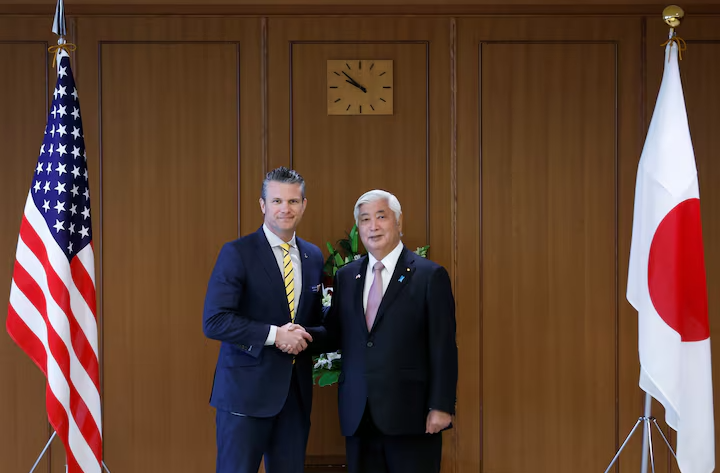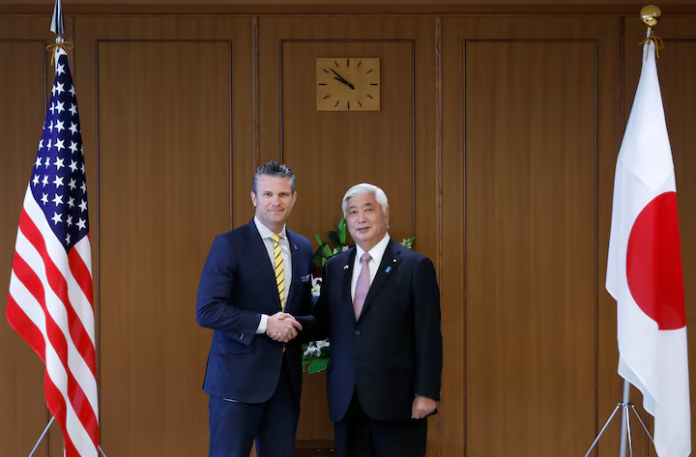TOKYO, March 30 (Starblog) – U.S. Defense Secretary Pete Hegseth has reaffirmed Japan’s crucial role in countering China’s military expansion, announcing the implementation of a long-planned upgrade to the U.S. military command structure in the country.
Speaking in Tokyo alongside Japanese Defense Minister Gen Nakatani, Hegseth emphasized the deep military ties between the two nations. “We share a warrior ethos that defines our forces. Japan is our indispensable partner in deterring communist Chinese military aggression,” he stated, specifically referencing tensions across the Taiwan Strait.
Strengthening the U.S.-Japan Alliance
Hegseth highlighted Japan’s role as a “cornerstone of peace and security in the Indo-Pacific” and assured that President Donald Trump’s administration remains committed to strengthening its partnership with Tokyo.
This announcement follows the Biden administration’s decision last July to overhaul the U.S. military command structure in Japan. The restructuring will introduce a combined operational commander in Japan, aligning directly with a newly established joint operations command by Japan’s Self-Defense Forces. The move aims to enhance operational coordination between the two allies in response to China’s growing military assertiveness.
The Role of U.S. Forces in Japan
Japan currently hosts around 50,000 U.S. military personnel, including fighter jet squadrons and the U.S. Navy’s only forward-deployed aircraft carrier strike group. This presence spans Japan’s 3,000-km (1,900-mile) archipelago, strategically limiting China’s regional influence.
Despite this, former President Trump has previously criticized the bilateral security treaty, claiming it unfairly benefits Japan. He also argued that Japan should contribute more financially to host U.S. forces. Meanwhile, Japan is doubling its defense budget, with significant investments in long-range missile capabilities. However, its military operations remain restricted by its U.S.-written post-World War II constitution, which renounces the right to wage war.
Japan-U.S. Joint Military Developments
During the meeting, Hegseth and Nakatani agreed to fast-track joint missile production. This includes accelerating plans for producing beyond-visual-range air-to-air AMRAAM missiles and potentially collaborating on SM-6 surface-to-air defense missile manufacturing. The move is intended to address a global shortage of advanced munitions.

Hegseth also requested greater access to Japan’s strategically positioned southwest islands, which sit near Taiwan and the contested East China Sea, a key flashpoint in U.S.-China tensions.
Controversy Over Leaked Signal Chat
Hegseth’s visit comes amid controversy over leaked details of U.S. military strikes in Yemen. Reports surfaced that he had shared classified information via the Signal messaging app with figures including Director of National Intelligence Tulsi Gabbard and CIA Director John Ratcliffe.
When asked about the leaks during his Tokyo visit, Hegseth declined to respond. Meanwhile, Gabbard told Congress that it would be up to the defense secretary to determine the classification of military intelligence.
As China continues to flex its military muscles in the Indo-Pacific, the strengthened U.S.-Japan military alliance sends a strong signal of deterrence. How this plays out in the coming months will shape the future of regional security.



